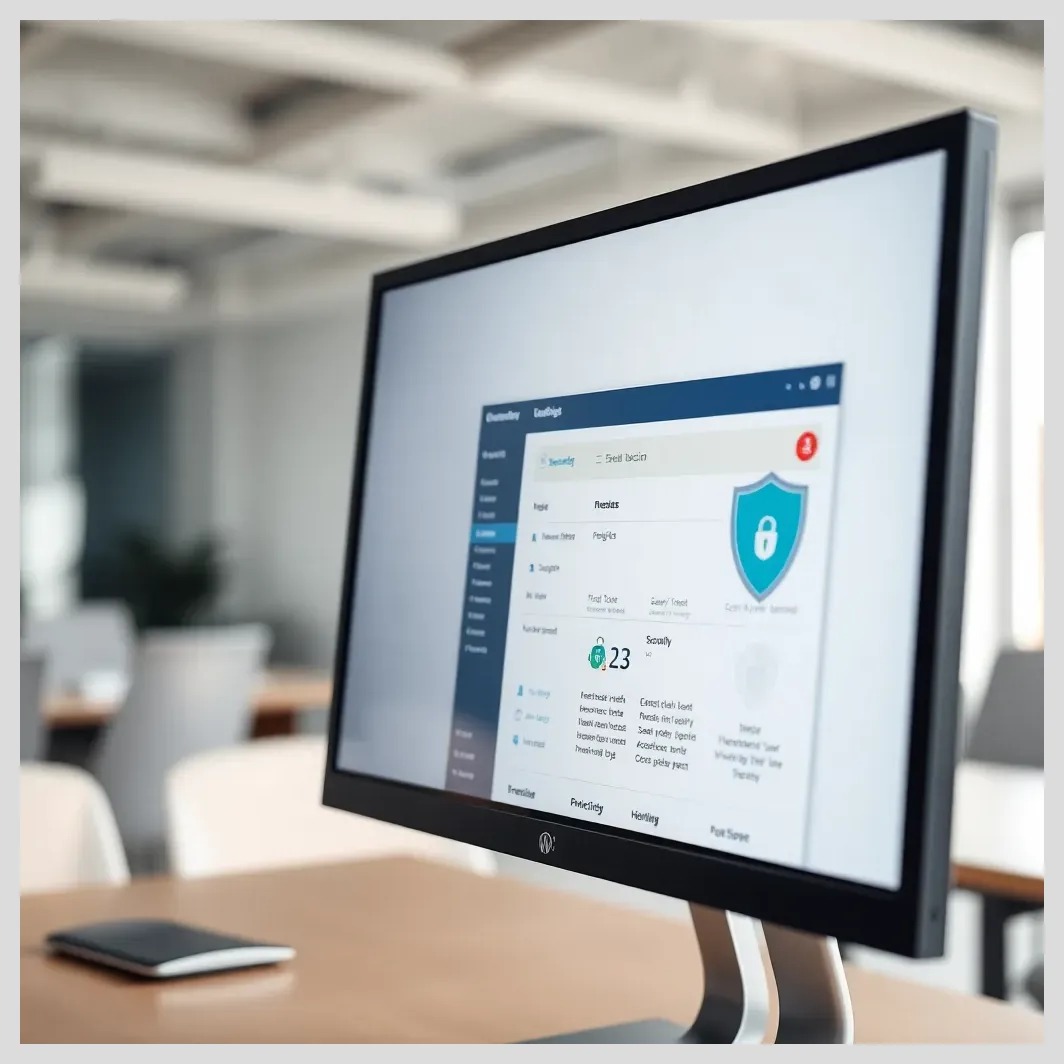In this article:
We will explore why two-factor authentication (2FA) is essential for WordPress website maintenance, explain how it works in simple terms, and provide a detailed, step-by-step guide to implementing 2FA using popular plugins like Google Authenticator. We will also compare other reliable 2FA plugins, discuss common pitfalls, and introduce Modular DS, a powerful tool for automating WordPress site management and security.
Key points covered in this article include
- Understanding the importance of 2FA in protecting WordPress sites
- How two-factor authentication works and why it’s more secure than passwords alone
- Step-by-step instructions to install and configure Google Authenticator on WordPress
- Comparison of other top 2FA plugins and their features
- Integrating 2FA into your ongoing website maintenance workflow
- How Modular DS can simplify and automate WordPress security and maintenance
- Common mistakes to avoid during 2FA implementation
- Real user experiences and expert insights on 2FA for WordPress
Introduction: Why Two-Factor Authentication Is Essential for WordPress Site Maintenance
Website security plays a critical role in ongoing site maintenance. Without proper protection, your WordPress website is vulnerable to a variety of threats that can compromise your data, damage your reputation, and disrupt your business operations. Common security threats targeting WordPress sites include brute force attacks, credential theft, and unauthorized access attempts. These attacks exploit weak passwords and unprotected login pages, making it easier for hackers to gain control.
Because WordPress powers a significant portion of the web, it is a frequent target for attackers. Its popularity means that vulnerabilities in plugins, themes, or the core system can be exploited if not properly secured. This makes adding extra layers of protection not just recommended, but essential.
Two-factor authentication (2FA) offers a reliable, user-friendly, and essential security layer that significantly reduces the risk of unauthorized access. By requiring users to provide two forms of verification—something they know (password) and something they have (a code from an app or device)—2FA strengthens your website’s defenses.
Integrating 2FA into your comprehensive website upkeep and maintenance strategy ensures that your site remains protected against evolving threats while maintaining a smooth user experience for administrators and users alike.
Two-Factor Authentication: A Protective Layer Beyond Passwords
Two-factor authentication is a security process that requires users to provide two different types of identification before gaining access. Traditionally, logging into a website involves entering a username and password. However, passwords alone have significant limitations.
Many users make common password mistakes such as using weak passwords, reusing the same password across multiple sites, or failing to update passwords regularly. These habits increase the risk of credential theft and brute force attacks, where automated tools try thousands of password combinations to break in.
2FA adds a second layer of security by requiring a second verification step. This usually involves a time-based one-time password (TOTP) generated by an authenticator app, a code sent via SMS, or an email verification link. This means even if a password is compromised, unauthorized users cannot access the site without the second factor.
The 2FA login process is straightforward: after entering your password, you are prompted to enter a unique code generated or sent to your registered device. This code changes frequently, making it nearly impossible for attackers to reuse.

Implementing two factor authentication wordpress step by step
Why Implementing Two-Factor Authentication Is a Must for WordPress Site Maintenance
Implementing 2FA is vital for protecting admin accounts and other user roles with elevated permissions. These accounts are prime targets for attackers because they control critical site functions.
By requiring two forms of authentication, 2FA drastically reduces the risk of unauthorized access and data breaches. It enhances security without complicating the user experience, as most users find entering a code simple and quick.
Moreover, 2FA supports compliance with security best practices and industry standards, which is increasingly important for businesses handling sensitive data.
In the long term, 2FA contributes to better website care by mitigating risks that could lead to downtime, data loss, or costly recovery efforts.
Step-by-Step Guide to Implementing Two-Factor Authentication on WordPress
Implementing 2FA on your WordPress site involves several key steps, starting with selecting the right method and plugin. Common 2FA methods include app-based authentication (like Google Authenticator), SMS verification, and email codes.
Popular and reliable plugins make this process user-friendly and manageable even for those with basic technical knowledge. Before starting, it’s important to back up your site and review your maintenance checklist to avoid disruptions.
The general process includes installing the plugin, activating it, configuring settings for user roles, and testing the login process to ensure everything works smoothly.
 10 WordPress Security Plugins ModularDS Integrates With Seamlessly
10 WordPress Security Plugins ModularDS Integrates With Seamlessly
Implementing two factor authentication wordpress step by step
Detailed Walkthrough: Setting Up Google Authenticator for WordPress
Google Authenticator is a top choice for secure and user-friendly 2FA. It generates time-based codes on your smartphone, providing a reliable second factor.
Step 1 Install the Google Authenticator plugin from the official WordPress repository.
Step 2 Activate the plugin through your WordPress admin dashboard.
Step 3 Configure 2FA settings, enabling it for different user roles such as administrators, editors, and contributors.
Step 4 Generate a QR code within the plugin settings and scan it using the Google Authenticator app on your phone.
Step 5 Verify the generated code to enable 2FA for your account.
Step 6 Test the login process by logging out and logging back in, entering your password and the 2FA code when prompted.
If you need to disable or reset Google Authenticator, you can do so safely by renaming the plugin folder via FTP or using recovery codes. Always remember to disable 2FA before changing phones and re-enable it afterward to avoid lockouts.
Benefits
Benefits
Enhances WordPress site security by adding an extra verification layer beyond passwords.
Reduces risk of unauthorized access and data breaches, especially for admin accounts.
Supports compliance with security best practices and industry standards.
User-friendly setup with popular plugins like Google Authenticator.
Integration into ongoing maintenance workflows improves overall website care.
Automation tools like Modular DS simplify management and enhance security.
Risks
Potential lockout if backup codes or recovery options are overlooked.
Forgetting to disable 2FA before changing devices can cause access issues.
Not enforcing 2FA for all critical user roles reduces its effectiveness.
Ignoring plugin updates and security patches can expose vulnerabilities.
Learning curve for new users and possible subscription costs for automation tools.
Exploring Other Reliable Two-Factor Authentication Plugins for WordPress
Besides Google Authenticator, several other plugins offer robust 2FA solutions
- miniOrange Google Authenticator Offers role-based settings and multiple verification methods.
- Wordfence Login Security Combines firewall and malware scanning with 2FA capabilities.
- Duo Two-Factor Authentication Provides multi-method verification and enterprise-grade features.
- Two-Factor Plugin A simple, lightweight option for basic 2FA needs.
| Plugin | Usability | Integration | Cost | Features | Support |
|---|---|---|---|---|---|
| Google Authenticator | User-friendly | WordPress core | Free | TOTP codes, QR scanning | Community |
| miniOrange | Moderate | Plugins & themes | Freemium | SMS, app, email codes | Premium support |
| Wordfence | Advanced | Full security suite | Free/Paid | Firewall, malware scan, 2FA | Community & premium |
| Duo | Enterprise-grade | Multi-platform | Paid | SMS, calls, app, hardware tokens | Premium support |
Comparison of Popular Two-Factor Authentication Plugins for WordPress
Modular DS vs Manual 2FA Setup vs Other Management Tools
How to Integrate Two-Factor Authentication Into Your Website Maintenance Workflow
To maintain a secure WordPress website, 2FA should be part of your regular maintenance routine. Schedule periodic security audits to check 2FA status and plugin updates.
Manage user roles carefully, enforcing 2FA for all critical accounts. Train your team and users on how to use 2FA and troubleshoot common issues.
Monitor login attempts and security logs to detect suspicious activity early. Combine 2FA with other security measures like firewalls, SSL certificates, and regular backups for comprehensive protection.
Practical Tips for Implementing Two-Factor Authentication (2FA) on WordPress
Why 2FA Matters
- Protects admin and critical user accounts from unauthorized access
- Adds a second verification step beyond passwords for stronger security
- Helps comply with security best practices and industry standards
Step-by-Step Setup with Google Authenticator
- Install the Google Authenticator plugin from WordPress repository
- Activate the plugin via WordPress admin dashboard
- Configure 2FA for user roles (admins, editors, contributors)
- Scan the generated QR code with the Google Authenticator app
- Verify the code and test login with 2FA enabled
Best Practices & Maintenance
- Regularly update 2FA plugins and WordPress core to patch vulnerabilities
- Enforce 2FA for all critical user roles to maximize protection
- Train users on 2FA usage and recovery options to avoid lockouts
- Monitor login attempts and security logs for suspicious activity
- Combine 2FA with firewalls, SSL, and backups for layered security
Avoid Common Mistakes
- Don’t forget to save backup/recovery codes to prevent lockouts
- Always disable 2FA before changing or resetting devices
- Avoid partial enforcement; apply 2FA to all critical accounts
- Keep plugins updated to avoid security vulnerabilities
- Educate users to reduce confusion and resistance to 2FA adoption
Recommended 2FA Plugins
- Google Authenticator – simple, free, user-friendly
- miniOrange – role-based, multiple verification methods, freemium
- Wordfence Login Security – advanced security suite with 2FA
- Duo Two-Factor Authentication – enterprise-grade, multi-method
- Two-Factor Plugin – lightweight and simple for basic needs
Automation & Management
- Use Modular DS for centralized, automated 2FA and site management
- Automate security updates, backups, and monitoring for multiple sites
- Save time and reduce errors with a user-friendly dashboard interface
Modular DS: The Ultimate Solution for WordPress Website Management and Security Automation
Modular DS is a powerful platform designed for agencies and professionals to automate and centralize the management of all their WordPress websites. It streamlines website upkeep by handling security updates, backups, performance monitoring, and importantly, two-factor authentication management.
With Modular DS, you can efficiently maintain multiple WordPress sites from a single dashboard, saving time and reducing errors. Its user-friendly interface and automation features make it ideal for busy professionals who want reliable security without the hassle of manual setup.
Pricing is competitive, with plans tailored to different needs, offering great value compared to manual management or multiple separate tools.
| Feature | Modular DS | Manual 2FA Setup | Other Management Tools |
|---|---|---|---|
| Usability | Centralized dashboard, easy automation | Manual plugin installs, individual configs | Varies, often fragmented |
| Integration | Supports multiple plugins, auto updates | Limited to plugin capabilities | Partial integration |
| Cost (approx.) | Starts at $15/month | Free to low cost, but time-consuming | Varies widely |
| Security Features | Automated 2FA enforcement, backups, monitoring | Depends on plugins used | Limited or partial |
Pros of Modular DS
- Centralized control over multiple WordPress sites
- Automated security updates including 2FA management
- User-friendly interface for agencies and freelancers
- Reliable and efficient website maintenance
Cons
- Subscription cost may be a consideration for very small sites
- Learning curve for new users to explore all features
Real-world success stories highlight how Modular DS has saved agencies countless hours and prevented security incidents through proactive management.
 Best Practices for WordPress Brute Force Attack Prevention in 2025
Best Practices for WordPress Brute Force Attack Prevention in 2025Ready to streamline your WordPress security and maintenance? Try Modular DS today and experience efficient, reliable website upkeep with automated two-factor authentication management.
Common Mistakes and Pitfalls When Implementing Two-Factor Authentication on WordPress
Many users stumble during 2FA implementation due to avoidable errors. One common mistake is overlooking backup codes and recovery options, which can lock you out if your 2FA device is lost.
Another pitfall is forgetting to disable 2FA before changing devices, leading to access issues. Not enforcing 2FA for all critical user roles reduces its effectiveness.
Ignoring plugin updates and security patches can expose vulnerabilities. Failing to educate users about the importance and proper use of 2FA leads to confusion and resistance.
Avoid these errors by planning carefully, communicating clearly with your team, and maintaining regular updates and backups.
Real User Opinions and Experiences About Two-Factor Authentication on WordPress
Across forums like Reddit and WordPress.org, users consistently praise 2FA for improving site security and providing peace of mind. Many share stories of thwarted hacking attempts thanks to 2FA.
Some users report initial setup challenges, especially with plugin compatibility or device changes, but most overcome these with community support and clear instructions.
Plugin performance and usability vary, with Google Authenticator and Wordfence often highlighted for reliability. Customer support quality also influences user satisfaction.
For further reading, check out discussions on Reddit WordPress 2FA setup and Google Authenticator plugin reviews .
Expert Opinion: The Strategic Importance of Two-Factor Authentication in Modern Website Maintenance
Experts agree that 2FA is no longer optional but a strategic necessity in today’s cybersecurity landscape. It complements other maintenance tasks like updates and backups to ensure long-term site health.
Balancing security and usability is key; 2FA achieves this by adding strong protection without overly complicating login procedures.
Looking ahead, authentication methods will continue evolving, but 2FA remains a foundational defense. Every WordPress site owner should prioritize it as part of their maintenance routine.
Summary: Your Step-by-Step Roadmap to Secure WordPress Site Maintenance with Two-Factor Authentication
Two-factor authentication significantly enhances your WordPress site’s security by requiring a second verification step beyond passwords. Implementing 2FA protects admin accounts, reduces unauthorized access risks, and supports compliance with security standards.
Follow the step-by-step guide to install and configure Google Authenticator or other trusted plugins. Integrate 2FA into your regular maintenance workflow, monitor security logs, and educate your team.
For professional-grade automation and centralized management, consider Modular DS , which simplifies 2FA enforcement and overall website upkeep.
References and Further Reading
Frequently Asked Questions About Two-Factor Authentication for WordPress
What is two-factor authentication and why is it important for WordPress?
Two-factor authentication adds an extra security step to your WordPress login, requiring a code in addition to your password. This helps prevent unauthorized access even if your password is compromised.
How do I set up 2FA on my WordPress site step by step?
Install a 2FA plugin like Google Authenticator, activate it, configure user roles, scan the QR code with an authenticator app, verify the code, and test the login process.
Which 2FA plugin is best for beginners?
Google Authenticator is widely recommended for its simplicity and reliability, making it ideal for beginners.
Can I use 2FA without a smartphone app?
Yes, some plugins support SMS or email verification codes as alternatives to smartphone apps.
What should I do if I lose access to my 2FA device?
Use backup codes provided during setup or disable the 2FA plugin via FTP to regain access.
How does 2FA affect website maintenance and user management?
2FA adds a security layer that must be managed alongside user roles and permissions, requiring regular audits and user training.
Is 2FA compatible with all WordPress user roles?
Most 2FA plugins allow you to enable authentication for specific roles, including admins, editors, and contributors.
How often should I update or review my 2FA settings?
Regularly review 2FA settings during security audits, especially after user role changes or plugin updates.
Have thoughts or questions about implementing two-factor authentication on your WordPress site? What do you think about the security benefits? How would you like to see 2FA integrated into your website maintenance routine? Share your opinions and questions in the comments below!



















